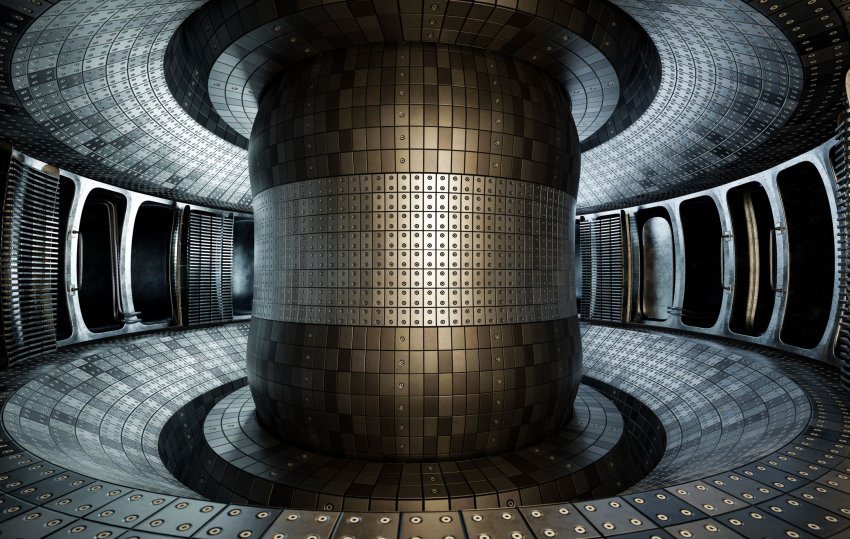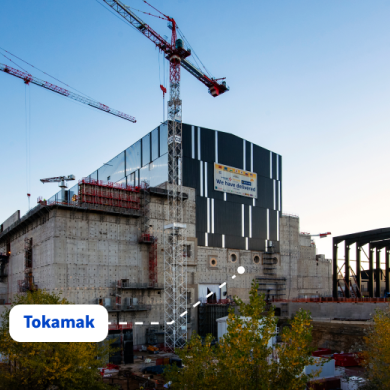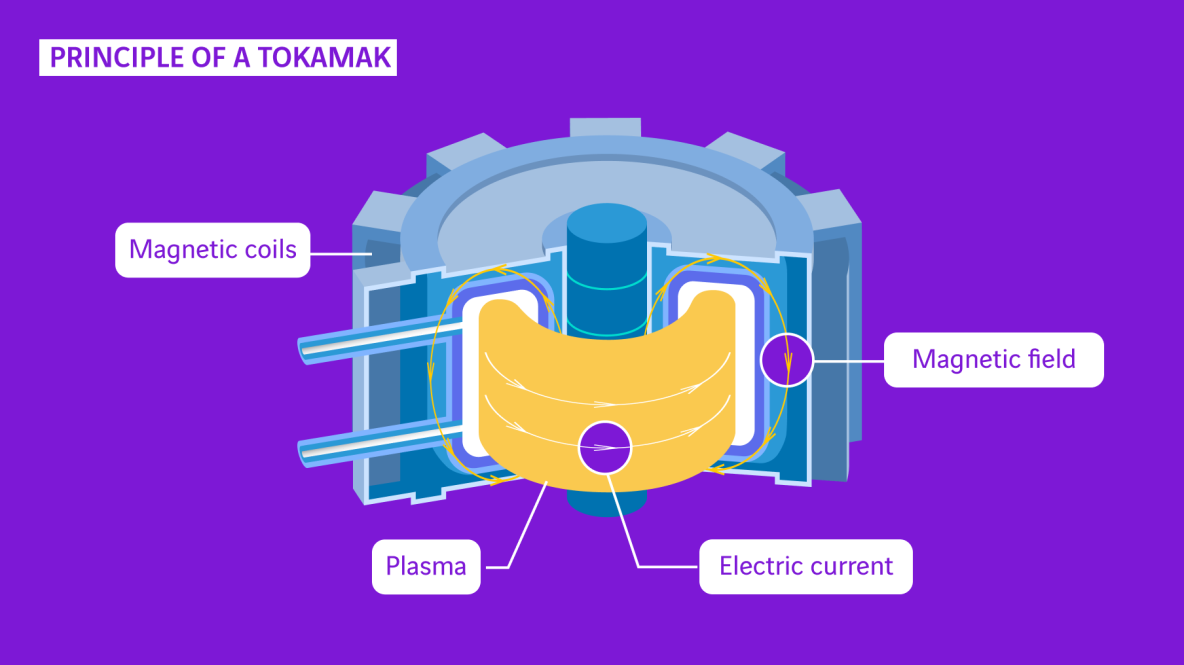
Fusion: the energy creating high hopes
Fusion, a disruptive technology and a clean, inexhaustible energy source, continues to fire the imagination of physicists and sci-fi writers alike. Could it be the miracle solution for stopping climate change in its tracks? Teams of researchers around the world have spent decades trying to turn this prospect into a reality.
On the same focus
France, the land of nuclear power
Fission: the historical nuclear energy
Challenges and discussions about nuclear power
Fusion: a miniature sun
A sun. That is roughly what scientists are trying to reproduce with the nuclear fusion technology. The colossal amounts of energy generated by our very own star come from the fusion of hydrogen nuclei into helium. Our sun, a huge ball of plasma, fuses 500 million tons of hydrogen each second. But what about in laboratories on planet Earth? The principle involves raising the ambient temperature to accelerate the speed of the atomic nuclei and cause the expected fusion reaction. The snag is that no material is capable of withstanding a plasma with a temperature running into several millions of degrees. So the whole challenge is managing to confine the reaction between virtual walls created by a powerful magnetic field.
A profusion of clean and abundant energy
The first research into fusion energy dates back to the 1950s. Scientists attempted to find ways of creating a magnetic containment system. Researchers in the Soviet Union came up with the principle of the tokamak, which is a Russian acronym for “toroidal chamber with magnetic oils”.
Fast-forward 70 years and researchers worldwide are still hell-bent on finding THE reactor design that will solve the equation, since the result will definitely be worth the effort. Fusion produces an immense amount of energy without releasing any CO2 emissions. It only generates a low level of radioactivity and waste with a half-life of no more than a few dozen years. Finally, fusion is not affected by the risk of a core meltdown, which is the biggest risk with fission. In the event of a failure in the reactor, the reaction grinds to an immediate halt.

A question of shape
Several different geometric shapes are currently being trialled for the containment chamber. Which design will push back the boundaries? The tokamak with its ring-shaped toroidal chamber? The linear reactor and its solenoid, which is reminiscent of a particle accelerator? The magnetised target fusion reactor? Or what about a stellarator, which looks like a complex loop of twisted magnetic fields? The scientific and technological competition to find the right design is far from over...
The core of the constellation: ITER
ITER, which stands for “international thermonuclear experimental reactor”, is a collaborative project involving 35 countries and close to 500 companies. This experimental reactor was announced in 1988, and construction work began in 2013 at the chosen site in Cadarache in southern France. The ITER plasma will be contained in a tokamak using superconducting magnets measuring some 17 to 24 metres in diameter and tipping the scales at 400 tons each, which will be cooled to temperatures near absolute zero with liquid helium. ITER is staggering in terms of its sheer size and complexity, and represents one of the most ambitious projects in the world today.
and 500 companies are collaborating

A building for the ITER tokamak reactor
ITER’s main building is due to house the world’s largest tokamak reactor. The cylindrical structure will measure 28 metres in diameter and 29 metres in height, while weighing no less than 23,000 tons. This civil engineering project for the future nuclear fusion reactor has mobilised the expertise of several VINCI Construction and VINCI Energies companies, from earthquake-resistant foundations and project management through to concrete engineering and the mechanics of outsized doors.
A host of new projects
Due to the major investments required and the considerable time needed to carry out the necessary research, the nuclear fusion race has so far been led by national and international agencies, featuring major synergies and technology transfers. Recent advances in materials science and computing have paved the way for the prospect of smaller-scale projects spearheaded by private companies. Approximately 30 such enterprises have broken into the sector after managing to raise several millions of euros in funding. The level of interest in fusion power is clearly growing.
When are we likely to see fusion power?
A fusion reactor acts like a power amplifier. Energy and material are injected into the reactor with the aim of producing a larger amount of power. Several technical challenges stand in the way before fusion reactors are capable of achieving significant commercial performance, such as the stability of the plasma, the resistance of the materials and the measures to deal with the high temperatures. The 2030s are shaping up to be a decisive decade, since that is when the ITER experimental reactor is scheduled to come on stream. During the same period, others are hoping to release reactors that can be developed on a commercial scale.
Is there a way to combine these ambitions with all these projects on their different scales to produce a viable technology?
Sources :
Pour la Science no. 121 - December 2023
Most viewed
Vous aimerez aussi
Words from researchers: let's fight stereotypes!
Charlotte, a research fellow at École des Mines, and Erwan, a university professor and researcher at AgroParisTech, talk…
Fondation VINCI pour la Cité: opening the door to others is another way of reaching out!
With some 1.3 million organisations and 2 million employees, France can lay claim to a dynamic network of associations…
Sea water desalination: a solution for turning the tide on the water scarcity crisis?
As water shortages continue causing havoc in a growing number of regions around the world, an age-old idea is experiencing a…




